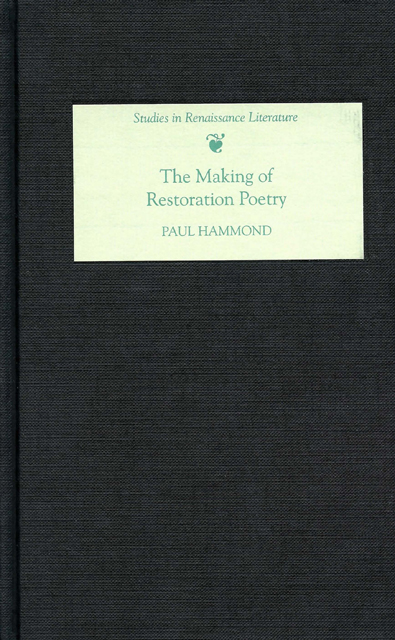6 - The King’s Two Bodies: Representations of Charles II
Published online by Cambridge University Press: 18 March 2023
Summary
WHEN THE English republic finally crumbled, and Charles Stuart returned to England in 1660 as king, great efforts were made to represent this as a restoration, the return to their rightful place of the people, the institutions and the habits of thought which had prevailed before the flood. And yet, however much the dominant rhetoric insisted upon this as a return to normality, the old customs and images could not be used in quite the same way again, for the whole basis of English sovereignty had been debated and remodelled. The language in which power is represented, and through which it is exercised, is necessarily different after 1660, no matter how much the iconography and political theory of the early Stuarts may be redeployed. This language is now assertive rather than simply declarative; it knows that there are alternatives. The discourse of sovereignty under the Tudors and the early Stuarts had centred upon the person of the monarch, and had developed the idea of the king's two bodies: the one public, sacred, and eternal, the other private, frail, and mortal. After 1660 this was palpably a damaged and questionable theory, for any notion of sovereignty which was founded upon the royal body had to take account of two scandals: firstly the execution of Charles I, the literal dismemberment of the king's body as a deliberated judicial and symbolic act; secondly the sexual exploits of Charles II, the involvement of the king's body in highly publicized promiscuity. The object of the present essay is to explore the language of kingship during the reign of Charles II in the light of the trauma and embarrassment which thus afflicted the traditional theory of ‘the king's two bodies’.
While the theory of the king's two bodies is medieval in origin, it acquired special iconographical power under Elizabeth I. The queen's body was turned into an icon: her physical virginity was read as a sign of her special distinction, setting her apart as someone of almost supernatural power in a liminal state between the human and the divine. She is the Virgin Queen, the Faerie Queene, the goddess Astraea, the phoenix; with a significant blurring of gender, she is also Solomon. In her portraits, which were widely disseminated, her body is subsumed by the rich dresses which speak of her power and her stability.
- Type
- Chapter
- Information
- The Making of Restoration Poetry , pp. 107 - 136Publisher: Boydell & BrewerPrint publication year: 2006



